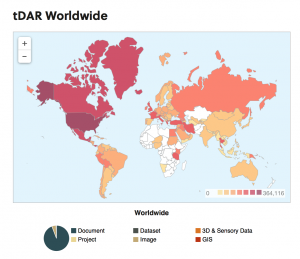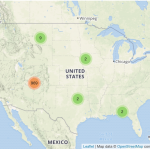Congratulations to our colleague, Dr. Paul Green, Cultural Resources Specialist for the East Region Support Team (RST), part of the U.S. Air Force Civil Engineer Center. The Secretary of Defense has recognized Paul’s excellent professional work with the 2015 Department of Defense Cultural Resources Management award.
At Digital Antiquity we are particularly happy to learn of this award and that one of the many major accomplishments for which his service is recognized involved a program that we have had a hand in. Paul had a key role in establishing
“…the first DoD digital cultural resources data archives for permanent curation. Maintained by the non-profit Digital Antiquity, the solution outsources the complex effort of keeping with technological changes in media storage while ensuring DoD cultural data is permanently maintained and easily accessible to authorized users and, as appropriate, the public. (from the announcement of Dr. Green’s award,
Cultural Resource Update, the Department of Defense Cultural Resource Program Newsletter [Vol. 11, No. 1, Spring/Summer 2015; p. 5]).
Together with Dr. Jim Wilde, Archaeologist and Cultural Resource Management Subject Matter Expert at the US Air Force Environmental Center, Paul is overseeing the continuing growth of important documents, data, images, and other digital data in tDAR (the Digital Archaeological Record).
More information about the US Air Force digital archive in tDAR is available at: https://www.tdar.org/news/2014/03/shaw-afb-and-avon-park-afr-archaeology-archives-now-in-tdar/; and https://www.tdar.org/news/2013/02/digital-antiquity-announces-the-dyess-air-force-base-archaeology/.
About the Secretary of Defense Environmental Awards program (from the Cultural Resource Update Vol. 11, No. 1, pp. 4-5): Since 1962, the Department of Defense Environmental awards have honored individuals, teams, and installations for their outstanding achievements and innovative work protecting the environment while sustaining mission readiness. A diverse panel of judges with relevant expertise representing federal and state agencies, academia, and the private sector evaluated all nominees to select one winner for each of the nine categories that cover six subject areas: natural resources conservation; environmental quality; sustainability; environmental restoration; cultural resources management; and environmental excellence in weapon system acquisition.
The Cultural Resources Management award recognizes individuals and teams making significant and lasting contributions to DoD CRM. This award acknowledges efforts to promote cultural resources stewardship in DoD by highlighting outstanding management activities and showcasing DoD’s extensive cultural resources, including archaeological sites, the historic built environment, and cultural landscapes. Desired initiatives include partnering with external stakeholders such as Native Americans, SHPOs, and local communities, and working with internal stakeholders in the areas of master planning, public works, and range management. More information on the Awards can be found at: http://www.denix.osd.mil/awards/FY14SECDEF.cfm.




